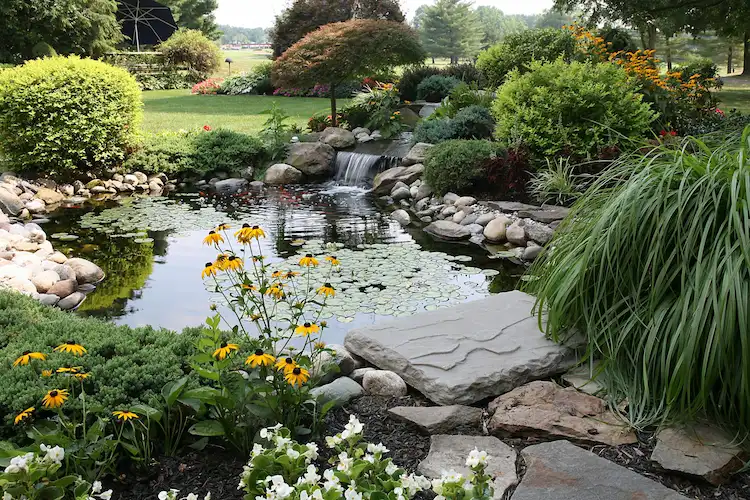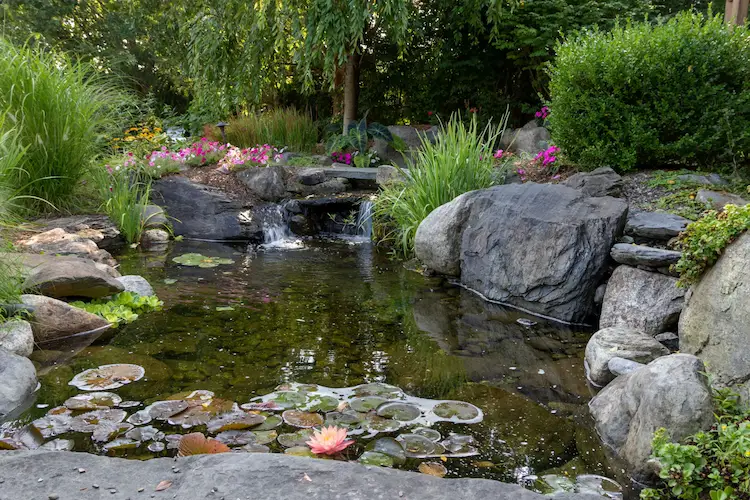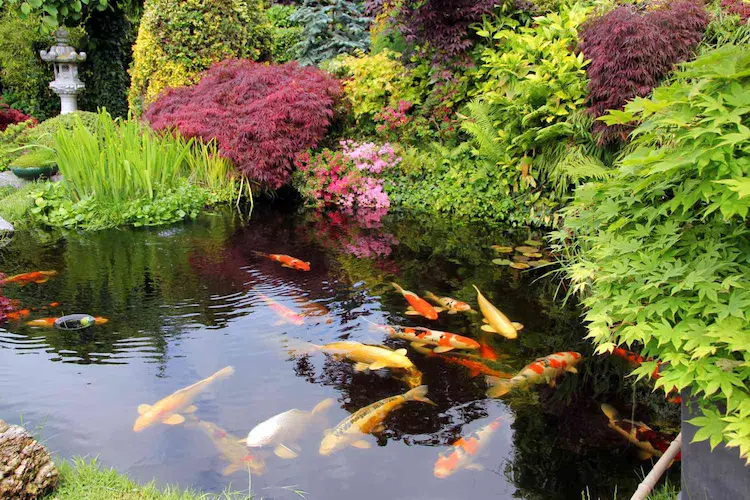There are many ways to bring water into our garden. Water features create a favorable microclimate, provide habitat for many beneficial animals, and provide water to the roots of surrounding trees and plants. And a natural outdoor pond is a great way to add an exotic flair to your garden. There water, soil, plants and animals live together in a harmonious balance. You can create a natural pond in your own backyard and maintain it effortlessly as the maintenance required is minimal. Here you will find useful tips and instructions on how to do this task in the garden. Continue reading!
How big should the natural pond be in the garden
The size of your natural pond is a matter of preference, but if you want fish you need a depth of at least 3 feet for them to winter well. A pond with lots of plants is worth it for the impressive view, so it would be good if you have enough space available.
How to choose the right location
A pond near a fence or shed will be protected from the worst of winter frost or summer heat. But note that part of your natural pond is in the sun so that plants can thrive and animals can live in it. If you create the pond near a building, you can also direct the rainwater down a drain pipe and fill the pond.
What you need for a natural pond
Here is everything you need for our natural pond in the garden. Let’s get to work!
- a suitable piece of garden
- a plank of wood
- pond liner
- a variety of aquatic plants
- some big rocks
- a spirit level
- Bausand
- a good spade
- Water (preferably use rainwater)
Creating a natural pond: step-by-step instructions

If you want to create your natural pond correctly, proceed as follows:
- First, mark your pond on the ground with a rope or hose, and then start digging! To make sure the sides are level, use a board across the hole and place a spirit level on it. Be careful to create a shape with lots of edges instead of smooth lines. Also, excavate deeper and shallower areas to create different microclimates and habitats for different plants and animals.
- Once you’ve dug the hole, remove any sharp rocks from the bottom of the hole. Then tamp the bottom of the pond with your feet to compact the top layers of soil and lay a 5cm layer of sand.
- Carefully place the foil in the hole and tuck the edge into the ditch; weigh them down with large stones. You can cut off excess film with scissors.
- Fill the bottom of the pond with the remaining sand. Add larger rocks, pipes, logs, etc. to the bottom to create habitat for small fish and other animals that need protection from predators.

- If possible, fill your pond with rainwater collected or with a hose from the tap.
- Fill in the ditch around the edge of the pond with soil. Once you have filled the pond, lay soil or flagstones over the exposed liner around the edges.
- When to plant the pond? You can put the plants in the pond about 1-2 weeks after the first filling with water. Carefully selected native species support local wildlife.
- Place rocks, logs, and plants at the edge of the pond to create habitats for animals that visit the pond. Consider including a wooden plank or similar ramp to help wildlife that may fall in. By planning for a gently sloping beach area when designing your pond, you can ensure that wildlife has an easy way out.
- If the plants are well chosen and the pond is kept in a relatively balanced ecological condition, it should not require much maintenance. You can collect dead organic matter and overgrown vegetation to keep the pond clean.
What are the best plants for garden ponds

You can create and plant a natural pond and it is very easy if you e.g. B. embellish with these plants:
Lotus (Nelumbo sp.)
You can plant lotus in pots up to 1m deep and let it flower on a stem high above the water surface. This is a perennial plant with leaves up to 51 cm in diameter and stems up to 3 m tall.
Rohrkolben (Typha latifolia)
Grows on pond edges, in moist soil or shallow water. This is a useful plant because the hollow stems carry oxygen to the root zone and to the fish. It is also a perennial plant that grows up to 3 m in height.
Irises (Iris versicolor)
A beautiful plant with 5 cm wide flowers in shades of blue or purple. The plant tolerates partial shade and is also perennial; the leaves are up to 30 cm high.
If you want fish in the natural pond…

If you are creating a garden pond and you want fish in it, these types of fish are suitable:
goldfish
Extremely low maintenance, goldfish will feed on plants, algae and larvae that they find. They live up to 10 years and are often up to 30 cm long.
Koi
Koi often live for 40 years or more and, depending on the size of the pond, can grow up to a meter long. They need to be fed regularly; you can even train them to eat out of your hand.